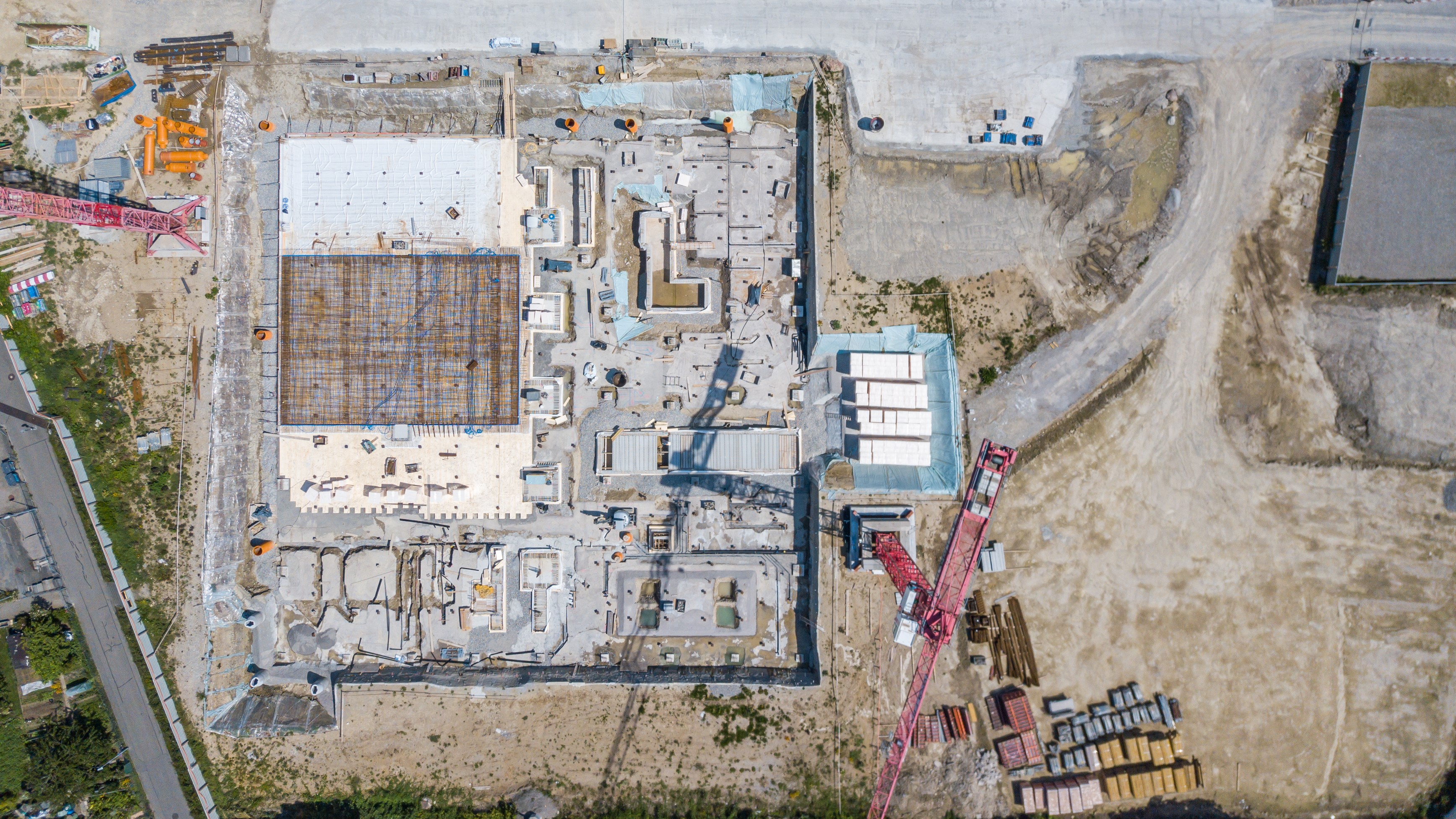
Whether I'm managing a multimillion-pound remediation project or preparing for a tricky conversation with someone I manage, I often start with a template.
Templates can be powerful ways to enable quality, efficiency and compliance in construction and surveying practice – at least, when they are used well.
Although standardised documents are sometimes unfairly seen as dry or unimaginative – something to be endured rather than embraced – they are in my experience a power tool.
They give structure to complex tasks, prevent time being wasted reinventing the wheel, and support training by setting out clear processes.
For the more forgetful among us, they ensure vital parts of a process aren't missed, serving as an aide-mémoire. In regulated or complex sectors of construction, they can be the foundation for good governance and compliance.
In an industry where delays are common – and often expensive – even small inefficiencies can snowball to have major impacts on the programme.
Templates are one way we can mitigate this risk: by prompting clarity at an early stage, standardising information and reducing the chance of duplicated or missing work, they support smoother, faster progress on projects.
Structure helps reduce error and improve quality
In construction, templates aren't always digital or written and can also be physical tools such as jigs or moulds that enable consistency on site.
The principle of the template is the same whether here or in the office, though: it offers a structure that supports repetition, reduces error and improves quality.
In professional practice, templates might take the form of documents, spreadsheets, checklists, structured frameworks, lists of prompts or repeatable processes. They're used to make sure that we approach recurring tasks in a consistent and efficient way.
Templates may be set out in a company's quality management system (QMS), built into digital platforms such as Autodesk Construction Cloud, or issued by professional bodies such as the HSE or RICS.
For example, the current edition of Developing a construction procurement strategy and selecting an appropriate route contains procurement strategy selection checklists.
Whatever form they take, templates such as these help reduce the mental burden of processes and maintain consistency and quality.
Standardised documentation establishes consistency
There are plenty of benefits to using templates, and many professional practices have developed suites of them for their staff.
These aren't just optional extras. They ensure outputs are consistent, professional and aligned with client expectations.
On a large planned maintenance survey programme, for instance, you don't want a client receiving a set of surveys with data presented in one order and another set that's completely different. A shared structure brings clarity.
As well as consistency and professionalism, templates also offer the following benefits.
- Efficiency and time-saving: there's no need to start from scratch each time. While developing a robust suite of templates may itself be time-consuming, it repays that effort many times over in saved resource-hours.
- Quality assurance: templates ensure that vital parts of a process aren't skipped. For example, if every project manager in our practice is working from the same template brief I know the foundational questions will always be answered.
- Traceability: even if something goes wrong, the very act of having followed a documented process can help demonstrate your due diligence; for instance, you can demonstrate your compliance to a client or evidence your actions in the event of a dispute. This is a crucial safeguard.
- Clarity and confidence: for junior team members or those in unfamiliar territory, templates provide scaffolding for their work.
- Delay mitigation: by ensuring the right actions are taken in the right order, templates help reduce programme risk and avoid costly omissions or duplication.
- Knowledge sharing: good templates are a mechanism for embedding hard-won experience across a team. They reduce reliance on individual memory and make quality replicable.
- Decision support: the RICS strategy selection checklists, for example, help professionals focus on what matters when choosing a procurement route.
'Even if something goes wrong, the very act of having followed a documented process can help demonstrate your due diligence'
Conversation and compliance become easier
Templates can also provide neutral ground for difficult conversations. In performance reviews, for example, a shared template gives both parties a structure to work from and ensures fairness. In my own team, I've found that having a clear template for one-to-one discussions helps reduce anxiety and keep the conversation constructive.
In regulated or high-stakes sectors such as construction, templates are more than just helpful – they can be foundational for good governance and compliance. The structure they offer ensures that critical information is gathered, recorded and reviewed in line with legislative or professional requirements.
For example, in fire safety remediation projects, templates play a key role in assembling and maintaining the golden thread of digital information mandated by the Building Safety Act 2022.
A well-designed template can ensure that data on materials, design decisions, installation records and inspection outcomes is collected consistently and submitted at the right stages, such as at gateway two or three.
Equally important is the way that data is stored and accessed. Templates that align with digital systems and common data environments make information more accessible and connected, supporting not just compliance but also meaningful analysis.
This allows teams to review performance, compare projects and identify lessons learned.
When these systems aren't in place, the opposite is true: data becomes fragmented and hard to use. Without structure, there's a risk that information is incomplete or delayed, which can jeopardise compliance and safety.
Intelligence and adaptation needed to avoid box-ticking
Of course, no system is without its pitfalls, and using templates can have some downsides.
- Stifling creativity: a poorly designed template can reduce thinking to box-ticking.
- Inflexibility: not every scenario will neatly fit the form. Templates that don't allow for nuance can frustrate rather than support.
- Outdated assumptions: templates can embed legacy thinking or methods that no one has challenged.
- Overconfidence: a completed form isn't always a completed job. Templates can make it feel as though the task is finished when in fact critical action or context‑specific judgement may still be needed. For example, completing a design risk register template doesn't in itself mean that all project risks have been mitigated – it still requires a competent professional to review, challenge and act on the information. It's important to recognise that structure doesn't replace professional accountability.
- Illusion of full risk coverage: templates can create the impression that all risks have been considered. But a ticked form doesn't guarantee holistic thinking. For example, in fire safety work it's essential to go beyond the list and ask: 'What risks might we be missing entirely?'
These issues can largely be mitigated by proper quality assurance, and by experienced staff mentoring junior colleagues to use and adapt templates thoughtfully.
Problems can also be addressed by regularly auditing templates, ideally as part of broader document management processes. A review cycle makes sure that templates remain relevant and reflect current legislation or best practice.
It also supports organisational transparency – that is, making your internal processes consistent, traceable and justifiable – which is particularly crucial in work subject to regulatory scrutiny or ISO standards.
Review and reflection support successful use
At Bailey Partnership, I'm currently leading the redevelopment of our suite of project management templates. So, as you might imagine, I've had a lot of time to reflect on what makes such a document genuinely helpful rather than something that adds friction or red tape.
We began with purpose: what problems are we actually trying to solve? I assembled a working group of project managers across the practice, and together we mapped out our day-to-day processes. We then asked: 'Which stages would benefit from a template?'
Next came design. We looked at previous templates from our own firm and others, and used the lessons we learned to inform improvements. Every template we created included space for nuance, with commentary boxes and prompts designed to encourage reflection rather than completion on autopilot.
The process has been long – project managers are rarely short of opinions – but it's been invaluable. Ultimately, the quality of a template is determined by how well its structure supports clear, flexible thinking.
If you're developing or working with templates, I'd offer the following advice.
- Treat templates as living documents. They should evolve based on user feedback and project lessons.
- Use them as springboards. They should support thinking, not replace it.
- Schedule regular updates to keep them current and useful; while these may take time, they are ultimately saving time for those who use them.
- Encourage challenge. New users in particular should be prompted to ask whether anything is missing.
I've learned that good templates give you just enough scaffolding to think more clearly, act more confidently and work better.
They offer a foundation for processes as wide-ranging as reporting a project strategy, recommending planned maintenance or navigating a delicate conversation about team roles and responsibilities.
Used well, templates give us more space for the parts of our work that matter most.
'I've learned that good templates give you just enough scaffolding to think more clearly, act more confidently and work better'
Subscribe to isurv to support your professional practice
RICS' online knowledge hub isurv offers surveyors and construction professionals a wealth of resources including standard forms and ready-to-use templates to support best practice across the built and natural environments.
Whether you're reviewing procurement options, preparing for a regulatory submission or drafting standard documentation, subscribing to isurv makes it easier to work to a consistently high quality with structure and clarity.
Certificate in Construction Project Management
90 hours CPD | Online
Build the skills every successful project manager needs.
Led by expert trainers, you'll explore each stage of a construction project using a simplified version of the RIBA framework and gain the vital soft skills needed to enhance team coordination and stakeholder engagement.
Increase your employability with this comprehensive nine-month online course today.
Upcoming cohorts:
20 January 2026
07 April 2026
16 June 2026

Abigail Blumzon FRICS is a specialist in fire safety and facade remediation at Bailey Partnership
Contact Abigail: Email
Related competencies include: Building information modelling (BIM) management, Data management, Risk management

